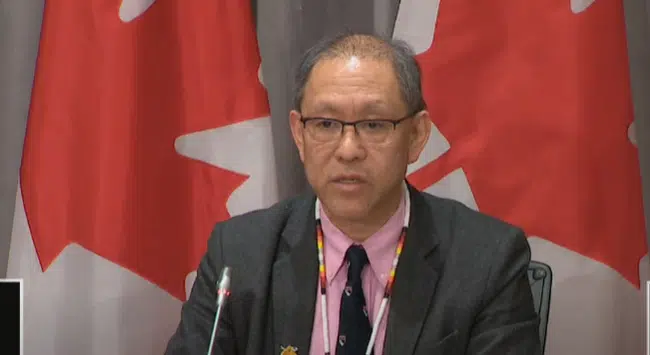There are 185 cases of COVID-19 reported among First Nations living on reserve in provinces.
Dr. Tom Wong, Chief Medical Officer of Public Health, said this is less than 0.3 per cent of reported Canadian cases.
“We are cautiously optimistic that nationally the First Nations on-reserve curve continues to show signs of flattening if there’s no future spread of COVID in First Nations communities,” he said.
Wong said 63 per cent of the total cases have recovered to date.
Of the 185 cases, 18 cases or 10 per cent required hospitalization. There have been two deaths on reserve and the case fatality rate is at one per cent, which is below Canada’s overall case fatality rate of seven per cent.
“This has been accomplished by impressive First Nations leadership and decisive actions, in using Public Health measures, including lockdown, physical distancing, prompt isolation, avoiding crowds, hand and cough hygiene and it has paid off,” he said.
Wong said timely epidemiological data collected by Indigenous Services Canada is only available for First Nations living on reserve.
“Beyond infections in First Nations living on reserve, there are many more cases elsewhere in Canada involving First Nations, Metis and Inuit with COVID-19 being reported to the provinces and territories,” he said.
Wong said they need help from provinicial and territorial health departments and agencies to support Indigenous peoples to get a comprehensive epidemiological picture beyond First Nations on reserve.
He said the communities themselves will decide what is best for them and it is improtant to recognize the inherent rights and self determination of First Nations, Metis and Inuit people.




